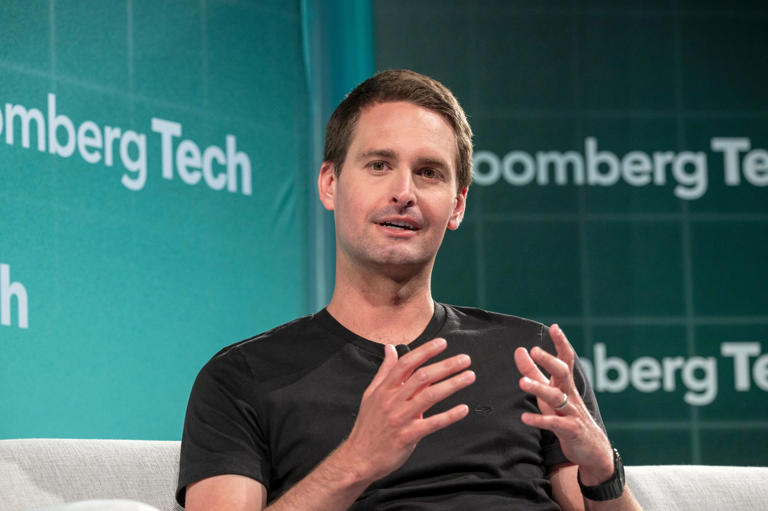Evan Spiegel on Reinventing Human Connection: From Snapchat Stories to AR Glasses

“We Have to Change the Way Technology Works”
When Snapchat CEO Evan Spiegel walked into The Colin and Samir Show, Southern California was literally burning—both hosts had just lost their homes to the Palisades fire. The conversation that followed felt equally combustible: a rapid-fire tour of competition, creativity, national-security politics, and why the smartphone era is already showing its age.
“People feel really frustrated that screens take them away from their friends… ultimately the solution is not to stop using technology—we have to change the way technology works so it keeps folks grounded in the real world.”
For wantrepreneurs and first-time founders, Spiegel’s candor offers a front-row seat to a decade-long masterclass in product intuition, strategic moats, and staying power.
1. The Emotional Arc: From Disappointment to Daily Habit
Spiegel still remembers launching his first site—futurefreshman.com—and signing up exactly one user: his mom. The “never-again” sting fueled Snapchat’s obsession with real-world utility. Yet even Snapchat’s now-iconic Stories feature “had zero traction for its first six months,” he told the hosts, prompting awkward board meetings and sleepless nights.
Takeaway for founders: Early indifference doesn’t necessarily invalidate the insight. If the core behavior is universal (the impulse to share moments in order), give the market time to catch up.
2. Copycats—And the Moats They Force You to Build
When Instagram cloned Stories pixel-for-pixel, Spiegel felt “a little annoyed,” but the episode reframed Snap’s strategy. Easy-to-replicate features were no longer enough; the company doubled down on “things that are hard to copy”—platforms, creator networks, and custom hardware.
“You can’t move hundreds of thousands of creators and millions of lenses to a new platform very easily.”
Founder Lens: If competitors can lift your UI overnight, your real moat must be elsewhere—data network effects, creator ecosystems, or proprietary tech.
3. Spectacles & the End of the Pocket Computer
Snap’s third-generation Spectacles project a full operating system onto slim wave-guide lenses. Spiegel pegs mainstream adoption “by the end of this decade.”
Why bet the company on glasses?
- The phone’s UX is physically mis-aligned: hunched backs, averted gazes, rising myopia.
- Hands-free cameras make creation “10× easier” for the rock climber and the parent juggling toddlers.
- AR shifts computing from attention extraction to contextual enhancement—showing information only when it adds value.
Action Step: Early-stage founders in hardware, health, or learning should prototype for a heads-up world now. Distribution channels and app paradigms will be wide open for the next five years.
4. $500 Million for Creators—But Only the Authentic Survive
Snapchat paid out more than half a billion dollars to creators and publishers in 2024 through revenue-share placements in Stories and Spotlight. Unlike platforms that incentivize click-bait thumbnails, Snap’s algorithm increasingly down-weights tile “game-play” and prioritizes viewer retention and relationship signals.
Why it Works
- In-feed Ad Insertion: Vertical video ads mid-story map neatly to YouTube-style rev-share.
- Higher Purchase Intent: Social shoppers are statistically more likely to buy after seeing a Snap versus Instagram or TikTok, according to eMarketer data Spiegel referenced on-air.
- Home-grown Stars: Creators like Brooke Monk grew from 16-year-old user to 3.5 million-follower entrepreneur without leaving the app.
Founder Angle: If your business relies on influencer partnerships, Snapchat’s “intimate scale” may deliver better ROI than broader but shallower feeds.
5. TikTok, Washington, and the 75-Day Wildcard
On the heels of President Biden’s executive order, Spiegel argued that national-security hawks now have “concrete evidence” that a foreign-owned app can sway U.S. policy—fueling the push for a forced sale or ban.
What entrepreneurs should watch:
- Ad budgets may reallocate quickly; diversifying into Snap, YouTube Shorts, and Reels now hedges platform risk.
- Creator dependency: Build email/text lists so your audience travels with you.
- Regulatory arbitrage: New entrants can differentiate on data locality and transparency.
6. Building for Human Nature, Not Hardware Constraints
The most quotable Spiegelism might be his critique of legacy UX:
“Too often we let technology drive the product rather than putting human needs at the center.”
He cites two small design moves that changed billions of behaviors:
- Tap-for-photo, hold-for-video: Eliminated the old camera toggle friction.
- Ephemeral messages: Mirrored real conversation, lowering the fear of judgment.
Founder Checklist
- Study microscopic annoyances—they often mask huge markets.
- Design for empathy first, efficiency second.
- Assume screens are a bug, not a feature. Your long-term product probably lives in voice, vision, or spatial layers.
Key Takeaways for the Wantrepreneur
- Iteration > Immaculate Conception: Even Snapchat Stories flopped before it flew.
- Moats Move Up-Stack: Features commoditize; ecosystems don’t.
- Authenticity Converts: Commerce follows trust, and trust thrives in smaller, friend-centric networks.
- Regulation Is a Feature: Anticipate policy shifts and bake resilience into your growth model.
- The “Computer” Is Up for Grabs: AR wearables will spawn the next wave of category leaders—start thinking beyond rectangles now.
The Bottom Line
Evan Spiegel’s journey reads like a Silicon Valley screenplay: billionaire founder, high-profile copycats, futuristic hardware bets. Yet his most enduring insight is disarmingly simple: technology should feel more like talking to a friend than staring at a feed. For today’s wantrepreneur, that means building products—and companies—that honor the messiness, immediacy, and intimacy of real human connection.
Ready to stop pitching features and start solving for feelings? The next ten years belong to founders who do.





